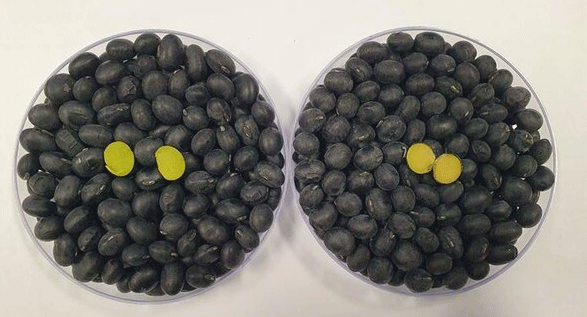Improving Soybean Varieties for Modern Farming
The Rural Development Administration (RDA) of South Korea has introduced several new soybean varieties over the past two years, all designed with the future of mechanized farming and high-quality tofu production in mind. These varieties—Dadream, Danheuk, Pungol, and Ganghan—each bring distinct advantages in terms of yield, disease resistance, and suitability for mechanized harvesting, addressing the growing needs of modern agricultural practices.
- Dadream: A Versatile Soybean for Tofu Production
Dadream, a late-maturing variety introduced by RDA in 2023, is primarily used for producing soft tofu (yudubu) and regular tofu (sundubu). Known for its high tofu yield and smooth texture, Dadream’s seeds have a light yellow color, and its pods are a soft brown. This variety is particularly suited for mechanized harvesting, with a high resistance to lodging and a strong pod-setting capability. It is recommended for planting in mid-to-late June, with a standard planting density of 70×15 cm (two plants per hole). As a late-season crop, timely harvesting is essential to prevent pod splitting during maturity. - Danheuk: A Stronger Soybean for Tougher Conditions
Another variety introduced by RDA in 2023, Danheuk shares many similarities with Dadream but is distinguished by its strong resistance to pod shattering. Danheuk is also suited for tofu production and is characterized by its purple flowers and dark brown pods. It is a medium-sized variety that reaches maturity in late October. Unlike other varieties, Danheuk is more resistant to pod splitting, which is a key advantage during harvesting. However, it is important to note that Danheuk can be susceptible to root rot in poorly drained soils, so growers should avoid cultivating it in such conditions. Additionally, the color of the seed coat may vary depending on environmental factors, so careful variety selection is advised. - Pungol: Fast-Maturing with High Adaptability
Developed in 2022, Pungol is an early-maturing soybean variety that offers a quicker harvest, making it ideal for intercropping with winter crops such as wheat or onions. With a growth height of 74 cm and resistance to pod splitting, Pungol is well-suited for mechanized farming. It is particularly adapted to regions like Gyeonggi, Jeonbuk, Jeonnam, and Gyeongnam. For best results, it is recommended to plant Pungol from late June to early July, with a denser planting configuration to compensate for the shorter growth cycle. - Ganghan: Strong and Suitable for Machine Harvesting
Ganghan, introduced by RDA in 2023, is another variety designed for mechanical harvesting, with a robust structure and high yield. It matures in late October and has a compact growth habit, with a height of about 65 cm, making it less prone to lodging. Ganghan is suitable for tofu and soybean paste production, and it thrives in central regions like Gyeonggi, Gangwon, and Chungcheong. However, farmers must be vigilant about managing early-season diseases like pod rot, as delayed planting could reduce yields. Ganghan’s resistance to pod splitting makes it a reliable variety for machine harvesting, though timely harvesting is still crucial.
Enhancing Soybean Farming with Mechanization
All these new varieties share a common feature: they are optimized for mechanized farming, which is essential in light of the ongoing labor shortages in rural areas. Mechanization not only reduces labor costs but also ensures more efficient harvesting, allowing farmers to handle larger-scale operations. The strong resistance to lodging and pod splitting in these varieties also means that farmers can expect higher yields and better-quality products with fewer losses.
As the demand for soybeans continues to rise, especially for uses such as tofu and soybean paste, the introduction of new, high-quality soybean varieties is a critical step in improving productivity and sustainability in the agricultural sector. These varieties offer solutions to some of the most pressing challenges facing modern farmers, including labor shortages, disease management, and the need for higher-quality crops. With proper care in planting and harvesting, Dadream, Danheuk, Pungol, and Ganghan are set to help South Korea’s soybean farmers meet both domestic and international demand for their products.
Error





